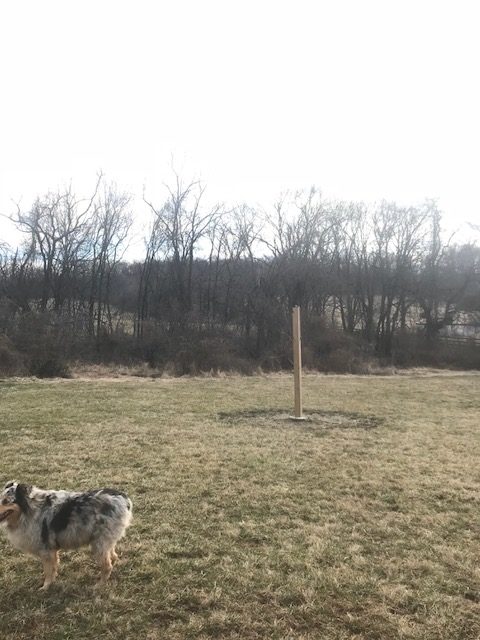There’s more than one way to skin a cat, and this also holds true for restarting ex-racehorses. Groundwork is a highly debated topic in the horse world, particularly the restarting world. Some people love it and do months of just groundwork. Other people think it’s overdone because racehorses know just as much as any other breed/discipline of horse, and feel they can accomplish more in the saddle than on the ground. And there are plenty of people in between. I’m one of those in-between people. As a type A personality, I get bored easily and completely understand why people can find it less than stimulating. However, the value of groundwork as a tool to teach your horses about respect, their bodies, lateral movements, and for desensitizing is enormous.
I feel that through groundwork you are able to learn so much about your horse. For example, by incorporating lunging into our retraining program, I learned that Artie is fairly even from left to right. There was no blatant ducking to either direction, no dragging out on the circle, and no issues picking up his leads. He was very well balanced. It’s also worth noting that lunging didn’t equate to being a kite in a hurricane.
After he got a good exercise on the lunge, we’d park in the middle, and I’d rub my whip all over him to see if he had any glaring “no no” spots, but Artie is not a “no no” horse. Next, we moved on to swinging the string of the whip over his body and letting it gently slap against him. Artie had the same reaction that most horses do and that was to move away from me as the string hit him, so I kept up with the motion of the whip, and when his feet stopped moving, he got praised. Then we moved to his butt, his hind legs, front legs and neck. The biggest plus to this is it gets your horse comfortable with things wrapping around their legs, so heaven forbid if your furry walking vet bill were ever to get caught in something, they won’t panic.

Standing patiently… for now. Photo by Amanda Cousins.
This assessment showed I had a level headed 4 year old, and I was in love. However, it did uncover a fidget issue. I believe all horses should stand quietly and tie, so here is how Artie learned (both of these activities were done after a nice long pony, so he was mentally and physically ready to work). With a rope halter and lead, I tied him to my “patience pole.” My wonderful husband installed this bad boy for me last year with a 4×4 post set in concrete. At the top of this 9’ tall post is an eye hook that you attach your rope to so that the horse can not pull directly back. They can move around the whole post without getting hung up.
Artie very thoughtfully tested the rope by bringing his head out to the side testing the pressure. Once he realized pulling wouldn’t set him free he walked around the pole in both directions, trying to work through how he might get away from this immovable object. In about three minutes, he took a big sigh, planted his feet and waited for me to set him free.
Then we learned about hobbles. I introduced them to Artie while he was in his halter and lead in our sand arena. It makes it easier to guide their decisions if you’re hooked to them. Artie tried a few bunny hops with his front feet, tried taking the tiniest of steps and then much like on the pole, realized the message was to stand still. The message also was this pressure he was feeling wasn’t cause for panic or flight.

The patience pole. Photo by Amanda Cousins
Several weeks later the skills that Artie learned on the patience pole and in the hobbles were put to the test. I had him in the ring with his rope halter and long lead rope when a large piece of snow slid off of the indoor roof. My full focus was on a student and thus was not on Artie. The disconcerting sound spooked my lesson horse as well as Artie, and once I knew my student was safe, I turned around to look at Artie, who sounded like he was quietly standing awaiting directions. The only reason he was standing still was because somehow, during his spook, he had gotten his lead rope over his back and wedged under his hind shoe. As a result, he was significantly stuck. This could have been the beginning of a horror story, but since Artie had been taught to have patience while in a pressure situation, he stood there waiting for his release. With some force, I yanked his rope out from under his shoe and gave him lots of praise for showing me that all our hard work had paid off.
And no, I didn’t get a picture of this event, sadly, because you know…responsibility.
As with most systematic programs, Artie is now proving to me that his groundwork fully translates to his under saddle work. Stay tuned to hear all about our adventures under tack!

Photo by Amanda Cousins
